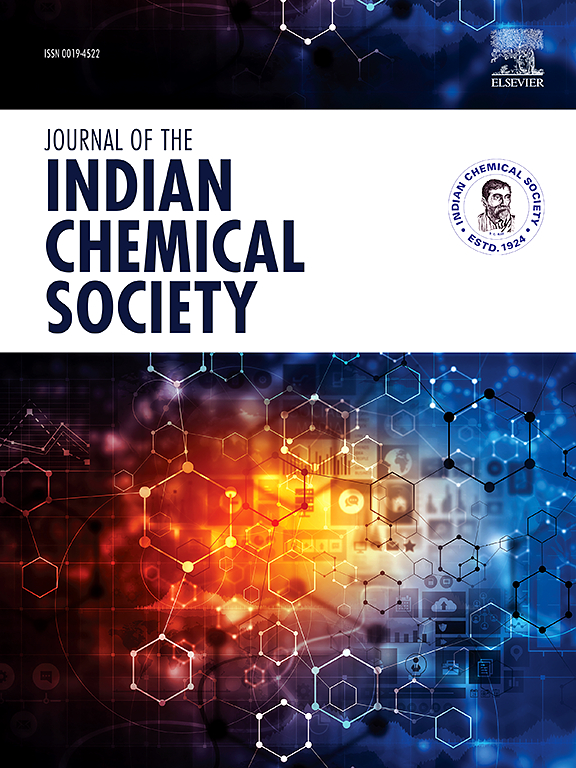PbS 薄膜连续流合成参数的化学计量学优化:基于实验设计 (DOE) 的 PbS 涂层能带隙预测数学模型
IF 3.2
4区 化学
Q2 CHEMISTRY, MULTIDISCIPLINARY
引用次数: 0
摘要
本研究采用实验设计法对使用连续流反应器合成 PbS 薄膜的重要工艺参数进行了优化。选择了流速、循环时间和温度作为流动化学沉积法镀膜的工艺参数。建立了一个数学模型来预测使用连续流动反应器沉积的 PbS chalcogenides 的能带间隙。根据铬化砷化物的中心复合设计结果,发现最佳工艺条件为:流速146.9 mL/min,循环时间:6.3 h,温度:30.3 °C:30.3 °C.方差分析结果表明,流速和反应温度参数对预测模型非常重要。换句话说,这些参数对控制 PbS 的 Eg 值起着重要作用。另一方面,在优化条件下合成的 PbS 薄膜的平均表面粗糙度(Ra:8.78 nm)和均方根粗糙度(Rq:11.34 nm)值支持了平滑的表面形成现象。在最佳实验条件下测得的镀膜能带隙为 2.18 eV,根据所建立的模型估算,其能带隙为 2.15 eV。所建立的模型可以预测 PbS 薄膜的 Eg,相对误差为 1.38%。测量得出的 Eg 值与预测值非常接近,这表明所建立的数学模型是可靠的。本文章由计算机程序翻译,如有差异,请以英文原文为准。

Chemometric optimization of the continuous flow synthesis parameters of PbS thin films: Design of experiments (DOE) based mathematical modelling for energy band gap prediction of PbS coating
In this study, important process parameters in the synthesis of PbS films using a continuous flow reactor were optimized with a design of experiments approach. Flow rate, circulation time and temperature were selected as process parameters in coating with the flow-through chemical deposition method. A mathematical model was developed to predict the energy band gap of PbS chalcogenides deposited using a continuous flow reactor. According to the central composite design results for the chalcogenides, optimum process conditions were found to be flow rate: 146.9 mL/min, circulation time: 6.3 h and temperature: 30.3 °C. ANOVA results showed that the flow rate and reaction temperature parameters are important for the prediction model. In other words, it can be said that these parameters play an important role in controlling the Eg value of PbS. On the other hand, the average surface roughness (Ra: 8.78 nm) and RMS roughness (Rq: 11.34 nm) values of the PbS film synthesized under optimized conditions supported the smooth surface formation phenomenon. The energy band gap of the film-coated under optimal experimental conditions was measured as 2.18 eV and was estimated as 2.15 eV by the developed model. The developed model could predicted the Eg of PbS film with a relative error of 1.38 %. The closeness of the measured and predicted Eg values revealed the reliability of the developed mathematical model.
求助全文
通过发布文献求助,成功后即可免费获取论文全文。
去求助
来源期刊
CiteScore
3.50
自引率
7.70%
发文量
492
审稿时长
3-8 weeks
期刊介绍:
The Journal of the Indian Chemical Society publishes original, fundamental, theorical, experimental research work of highest quality in all areas of chemistry, biochemistry, medicinal chemistry, electrochemistry, agrochemistry, chemical engineering and technology, food chemistry, environmental chemistry, etc.

 求助内容:
求助内容: 应助结果提醒方式:
应助结果提醒方式:


